What Are Vinyl Records Made Of? | Angelshorn® Vinyl
Vinyl records have been around, considering that before the turn of the 20th century, the techniques utilized to make them have not altered much ever since. Even before the innovation of the records you enjoy and understand today, none aside from Thomas Edison had developed a gadget called the phonograph, which utilized a primitive variation of the same innovation as the turntable. The complex procedure of developing vinyl records is interesting, and it's a testimony to human originality and resourcefulness.
In this post, we'll be covering the procedure and products utilized to produce vinyl records. Keep checking out to discover if you're curious about how your preferred albums were made into vinyl!
The Process of Manufacturing Vinyl Records, Step by Step
Below are basic and fast descriptions of the 3 primary steps in developing vinyl records-- cutting, plating, and pushing.
#1 Vinyl Cutting
When a band or artist has completed taping an album, an audio engineer can utilize the last master recording as the basis for what is understood in the vinyl market as a master disc. This rigid lacquer disc is the basis for all vinyl copies of the album.
The grooves on the lacquer master disc are cut by an automated lathe geared up with a sapphire cutting tool. This cutting tool is created to move according to the vibrations it gets as the master recording of an album is repeated. The lathe engraves these vibrations into the lacquer disc, made from nitrocellulose.
It's essential to keep in mind that the disc produced by the lathe is not a vinyl record itself. Instead, this disc is more of a design template-- the grooves engraved into it by the lathe are later copied onto vinyl for circulation. The lacquer master disc might not be used as a turntable, and it would not be readily available for sale.
#2 Vinyl Plating
After the cutting procedure is total, the master disc is delivered to a plating center. A group of skilled workers will utilize it as a recommendation point for the next step in the procedure-- plating.
After Cutting, Plating Starts ASAP
The plating procedure needs to start practically instantly after the master disc shows up. If the plating is delayed for too long, the master disc can be deformed, leaving it listed below the requirements of the record market.
While an inexperienced ear may not have the ability to hear the modifications that this warping can trigger, record-making experts are skilled and competent sufficient to understand when a master disc has ended up being deformed. The mastering procedure will need to start over if that takes place, which can be lengthy and costly.
#3 Electroplating
An essential part of the record-making procedure is understood as electroplating. After the lacquer master disc is covered and sprayed, it is covered with nickel plates.
After electroplating is total, the plating group can evaluate a preliminary copy of the main for quality assurance. This procedure might require duplicating several times to represent any mistakes. As soon as the plating group is pleased with their work, they utilize the nickel plates to develop stampers, which will be utilized throughout the production procedure.
#4 Pushing
The stampers produced throughout the electroplating procedure play an essential function in the next part of a vinyl record's conception-- pushing.
These stampers are filled into a hydraulic press. This press is connected to a steam-heated hopper filled with polyvinyl chloride. Polyvinyl chloride is the main product utilized in the production of vinyl records, and it's likewise where vinyl gets its name.
The heated polyvinyl chloride pellets are melted down by the press, which is crushed between the stampers to engrave the stamper's grooves into a newly-created vinyl disc. After the two stampers have pushed grooves into each vinyl side, it is enabled to cool to prevent warping and melting.
#5 More Quality Control
After pushing is total, the batch of records must be thoroughly checked for flaws and defects. Quality assurance plays an essential function in the record-making procedure-- without it, records might be unplayable or have inferior sound quality.
To evaluate a batch of records precisely, a competent audio service technician will search for cosmetic defects and defects to determine whether any records are deformed, misshapen, scratched, or split. In addition, the engineer will evaluate the noise of the records. If a record has cosmetic or sonic concerns, it has to be disposed of and left out of the batch.
Due to the heavy focus on quality in the vinyl market, as much as 20% of a set of vinyl records might be turned down after quality control is total. This product, which makes up the structure of every vinyl record, can be recycled by grounding turned down records into small pellets, which are later on utilized in the pushing procedure for brand-new records.
#6 Distribution, style, and Product Packaging
After the vinyl record is total and has passed its assessment, there are still plenty more steps in the procedure before it can strike the racks. Numerous businesses that make vinyl records contract out all of the style and product packaging to other businesses, which suggests records will require to alter hands once again before they are sealed and prepared to disperse.
Because vinyl is such a visuals-heavy format, no element of the style procedure must be disregarded. Musicians and bands-- or the labels are representing them-- generally agree with artists and designers, mainly to produce different material that will just be consisted of in a vinyl pushing of an album.
Of the elements of style in total, a business will require to be contracted to print the vinyl's product packaging components-- the coat, sleeve, and inserts. As soon as these components are finished, the end product will be sealed in diminish wrap to secure it and represent that it is brand new.
At this point in the procedure, a record is set to be put out on the racks in record shops or made readily available online. And that's simply part of what makes vinyl records unique.
Conclusion
For more information about the exciting procedure behind vinyl record production, check out the Angelshorn® blog site. from selecting a preamp and cartridge to finding what turntable to purchase.
Angels Horn Store:

Bring music to life.
AngelsHorn Mission
AngelsHorn offers a variety of record players, each with an elegant, retro style designed to provide a high-quality music experience.
Our record players are decorative, functional, and environmentally friendly, a perfect combination of classic record players and modern audio technology. Choose the AngelsHorn record player to make your life more colorful!
AngelsHorn, Better Products, Better Service, Lower Prices!






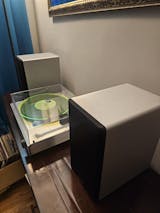
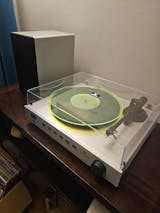
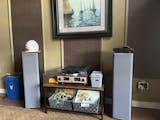

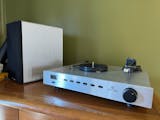
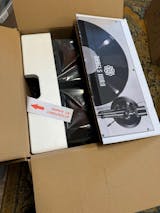
Leave a comment